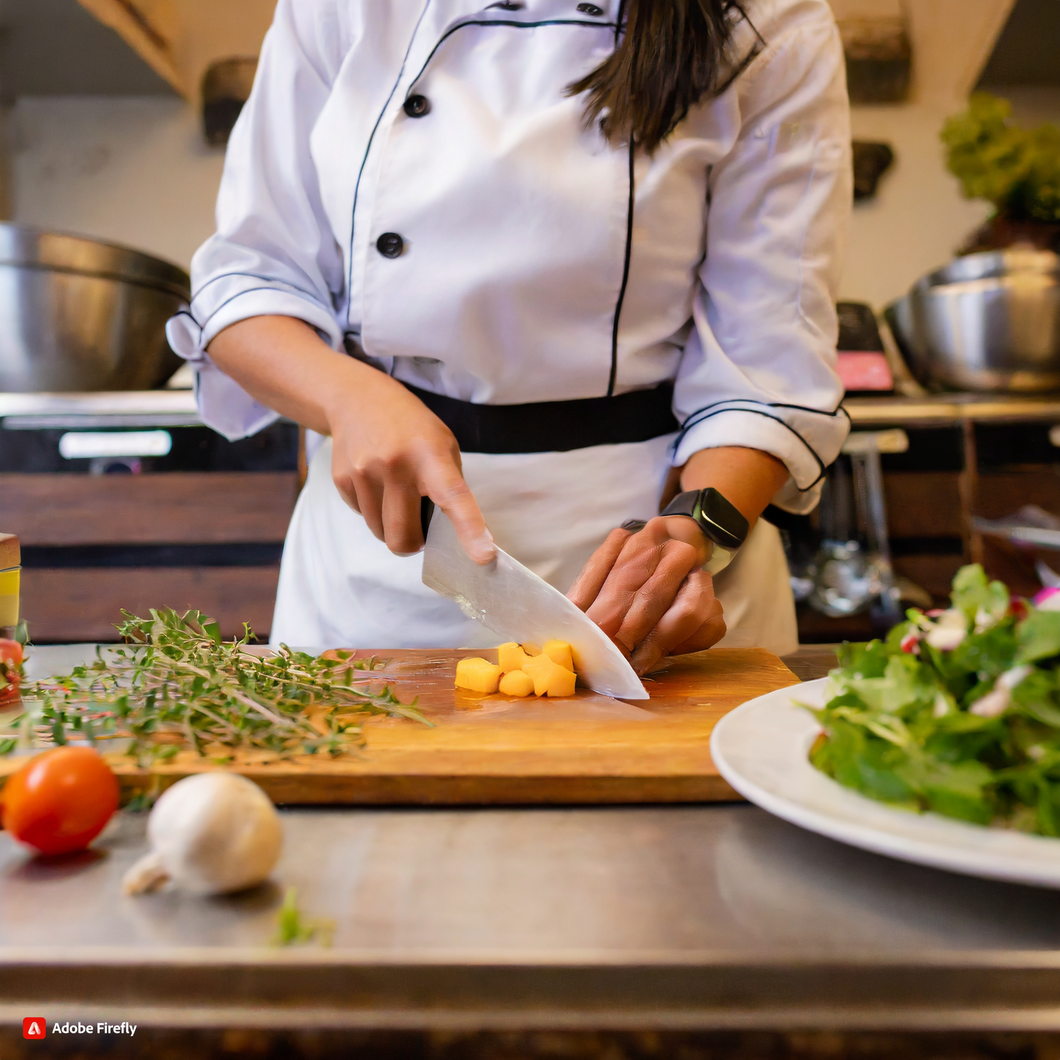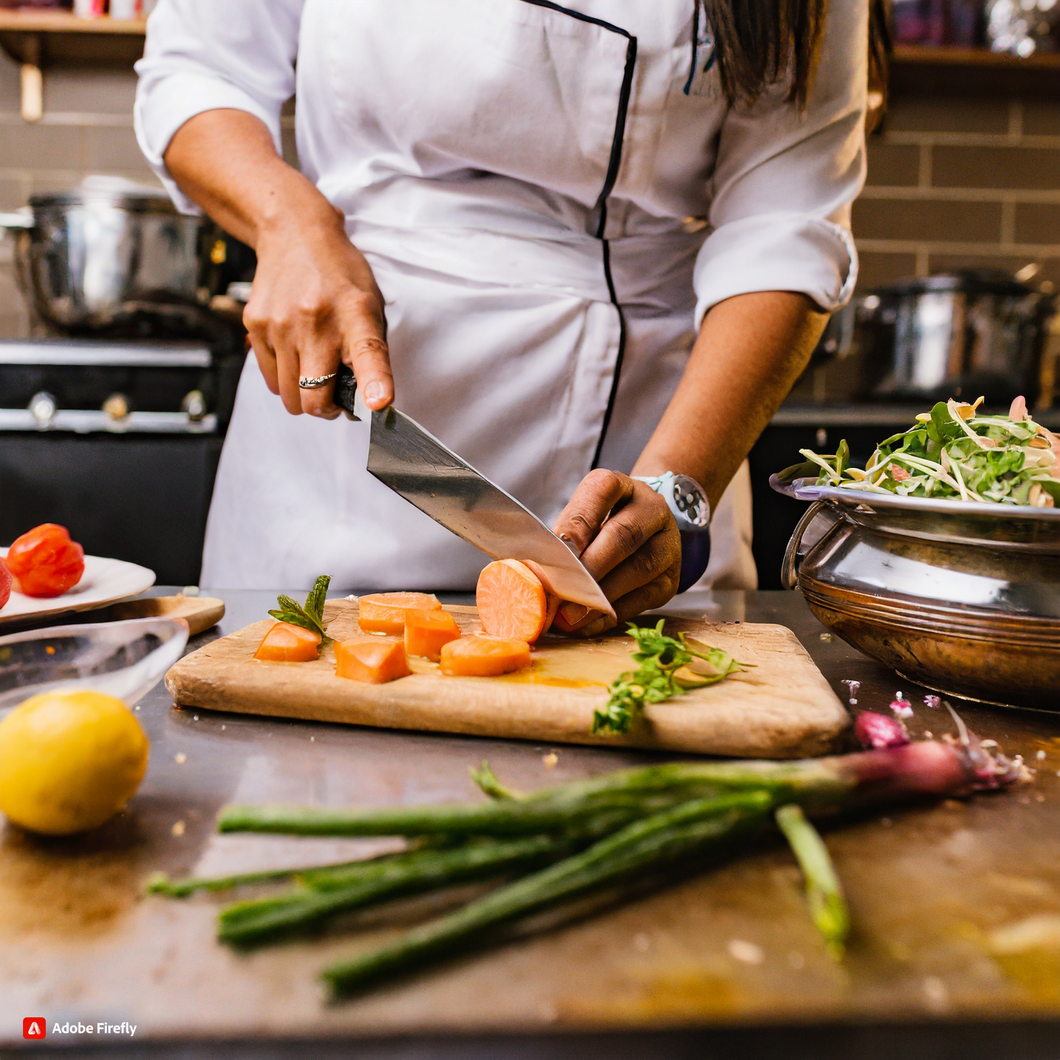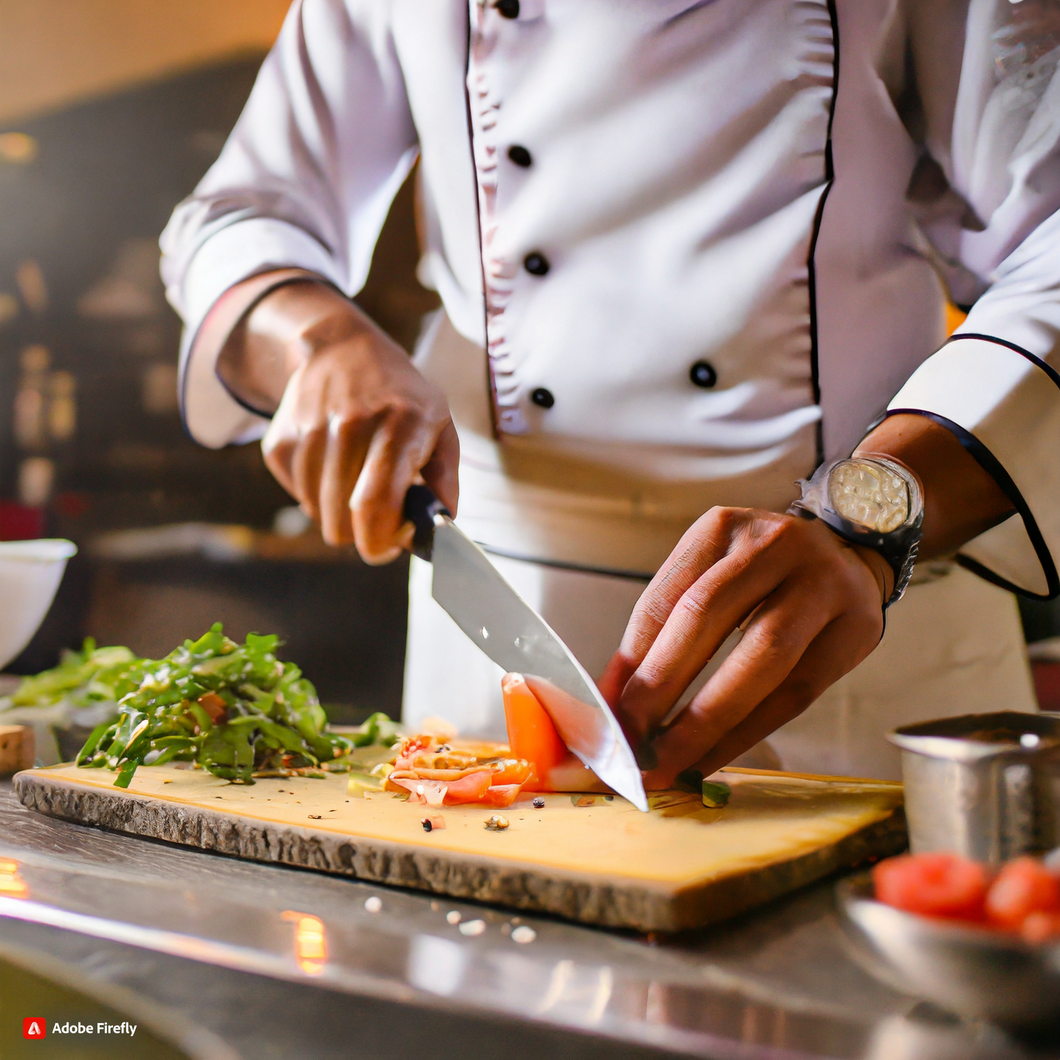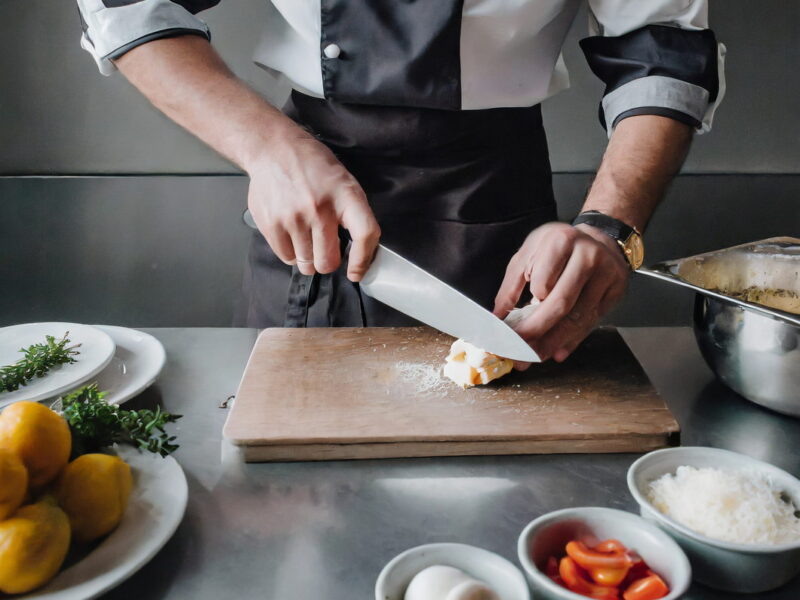Introduction
Chef’s Knife Mastery is a skill that every aspiring chef must possess in order to achieve culinary precision. A chef’s knife is an essential tool in the kitchen, and mastering its use can greatly enhance the quality and efficiency of cooking. With proper training and practice, chefs can unleash the full potential of their chef’s knife, allowing them to create dishes with precision, speed, and finesse.
In this guide, we will explore the importance of chef’s knife mastery and provide tips and techniques for honing this crucial skill. Whether you are a professional chef or a home cook, mastering the use of a chef’s knife will elevate your cooking to the next level.
The Importance of Proper Knife Technique for Mastering Chef’s Knife Skills
Are you looking to take your cooking skills to the next level? Do you dream of being able to chop, slice, and dice like a professional chef? Well, the key to achieving culinary precision lies in mastering the use of a Chef’s Knife. This versatile and essential tool is a staple in any kitchen, and with the right technique, you can unlock its full potential.

Proper knife technique is crucial for any aspiring chef. Not only does it ensure safety in the kitchen, but it also allows for more efficient and precise cutting. So, let’s dive into the importance of proper knife technique for mastering Chef’s Knife skills.
First and foremost, safety should always be a top priority in the kitchen. A sharp Chef’s Knife can be a dangerous tool if not handled correctly. By mastering proper knife technique, you can reduce the risk of accidents and injuries. This includes holding the knife correctly, keeping your fingers tucked in, and using a cutting board to protect your countertop and fingers.
But beyond safety, proper knife technique also plays a significant role in the outcome of your dishes. Have you ever struggled to cut through a tough piece of meat or found your vegetables unevenly chopped? This is often due to using incorrect knife technique. By mastering the proper grip and motion, you can achieve clean and precise cuts, resulting in evenly cooked and visually appealing dishes.
One of the most crucial aspects of proper knife technique is the grip. Many people make the mistake of holding the knife with their fingers wrapped around the handle, which can lead to a lack of control and precision. Instead, try holding the knife with your thumb and index finger gripping the blade, and your remaining fingers wrapped around the handle. This grip allows for better control and maneuverability of the knife.
Another essential aspect of proper knife technique is the motion. The key is to use a rocking motion, where the tip of the knife stays in contact with the cutting board while the blade moves up and down. This motion allows for more efficient cutting and reduces the risk of injury. It also helps to keep the blade sharp for longer, as it avoids unnecessary contact with the cutting board.
In addition to the grip and motion, it’s essential to use the right knife for the task at hand. A Chef’s Knife is a versatile tool, but it’s not suitable for every cutting task. For example, a paring knife is better for peeling and intricate cutting, while a serrated knife is ideal for slicing bread. By using the right knife for the job, you can achieve better results and prolong the life of your Chef’s Knife.
Lastly, practice makes perfect when it comes to mastering proper knife technique. It may take some time to get used to the grip and motion, but with consistent practice, it will become second nature. You can also watch tutorials or take a cooking class to learn from professionals and get personalized feedback on your technique.
In conclusion, proper knife technique is crucial for mastering Chef’s Knife skills. It not only ensures safety in the kitchen but also allows for more efficient and precise cutting. By mastering the grip, motion, and using the right knife for the task, you can unleash the full potential of your Chef’s Knife and take your cooking skills to the next level. So, grab your Chef’s Knife and start practicing – your taste buds will thank you!
Essential Knife Care Tips for Maintaining Your Chef’s Knife’s Precision
As any chef will tell you, a good Chef’s Knife is an essential tool in the kitchen. It’s the workhorse that helps us chop, slice, and dice our way to delicious meals. But just like any other tool, a Chef’s Knife requires proper care and maintenance to ensure it stays in top shape and maintains its precision.

Here are some essential knife care tips to help you keep your Chef’s Knife in tip-top shape:
1. Keep it Sharp
The most important aspect of maintaining your Chef’s Knife’s precision is to keep it sharp. A dull knife not only makes your cutting tasks more difficult, but it can also be dangerous as it requires more force to cut through food, increasing the risk of slips and cuts.
To keep your knife sharp, invest in a good quality sharpening stone or a honing steel. Regularly honing your knife will help maintain its sharpness, while sharpening it every few months will ensure it stays in top condition.
2. Hand Wash Only
While it may be tempting to throw your Chef’s Knife in the dishwasher for a quick clean, this is a big no-no. The high heat and harsh detergents in dishwashers can damage the blade and handle of your knife, causing it to rust or lose its sharpness.
Instead, hand wash your knife with warm water and mild soap, then dry it immediately with a clean towel. This will help prevent any rust or corrosion from forming on the blade.
3. Store it Properly
Proper storage is crucial for maintaining your Chef’s Knife’s precision. Avoid throwing it in a drawer with other utensils, as this can cause the blade to become dull or damaged. Instead, invest in a knife block or magnetic strip to keep your knife safely stored and easily accessible.
If you do need to store your knife in a drawer, make sure to use a blade guard or sheath to protect the blade from getting damaged.
4. Use a Cutting Board
Using a cutting board is not only important for protecting your countertops, but it also helps maintain the sharpness of your Chef’s Knife. Cutting on hard surfaces like granite or glass can cause the blade to become dull quickly.
Invest in a good quality cutting board made of wood or plastic, and make sure to avoid cutting on any hard surfaces.
5. Avoid Cutting Frozen Foods
While it may seem like a time-saving hack to use your Chef’s Knife to cut through frozen foods, it can actually cause serious damage to the blade. The extreme cold temperature of frozen foods can cause the blade to become brittle and chip or break.
Instead, let frozen foods thaw before cutting them, or use a separate knife specifically for cutting through frozen items.
6. Don’t Use Your Knife as a Can Opener
We’ve all been there – struggling to open a can and reaching for the nearest knife to pry it open. However, using your Chef’s Knife as a can opener can cause serious damage to the blade, as well as the handle.
Invest in a good quality can opener and save your knife for its intended purpose – cutting food.
By following these essential knife care tips, you can ensure that your Chef’s Knife stays in top condition and maintains its precision for all your culinary needs. Remember, a well-maintained knife is not only safer to use, but it also makes cooking a more enjoyable and efficient experience. Happy cooking!
How to Choose the Perfect Chef’s Knife for Your Culinary Needs
Are you looking to elevate your cooking game and unleash your inner chef? Look no further than mastering the use of a Chef’s Knife. This versatile and essential tool is a must-have for any home cook or professional chef. But with so many options on the market, how do you choose the perfect Chef’s Knife for your culinary needs? In this article, we’ll guide you through the process of selecting the right Chef’s Knife for you.
First and foremost, it’s important to understand the anatomy of a Chef’s Knife. The blade, handle, and tang are the three main components to consider when choosing a knife. The blade is the most crucial part, as it is responsible for the cutting and slicing. The handle is where you grip the knife, and the tang is the part of the blade that extends into the handle. A full tang, where the blade extends all the way to the end of the handle, is considered to be the most durable and balanced option.

Next, consider the size and weight of the knife. The size of the blade can range from 6 to 12 inches, with the most common size being 8 inches. The weight of the knife is a personal preference, but a heavier knife can provide more power and control while a lighter knife may be easier to maneuver. It’s important to hold the knife in your hand and get a feel for it before making a decision.
Another important factor to consider is the material of the blade. Stainless steel and high-carbon steel are the most common options. Stainless steel is more resistant to rust and stains, while high-carbon steel is known for its sharpness and edge retention. Some knives also have a Damascus steel blade, which is made by layering different types of steel together for a unique and beautiful pattern. Ultimately, the material of the blade will affect the sharpness, durability, and maintenance of the knife.
The shape of the blade is also something to consider. A straight edge blade is the most common and versatile option, suitable for chopping, slicing, and dicing. A serrated edge blade is best for cutting through tough or crusty foods, such as bread or tomatoes. A granton edge blade has small indentations on the side, which helps prevent food from sticking to the blade. This is a great option for slicing meats or fish.
When it comes to the handle, comfort and grip are key. The handle should feel comfortable in your hand and provide a secure grip. It’s also important to consider the material of the handle. Wood, plastic, and metal are the most common options. Wood handles are aesthetically pleasing but may require more maintenance. Plastic handles are durable and easy to clean, while metal handles can be slippery and uncomfortable to hold for extended periods.
Lastly, consider your budget. Chef’s knives can range from $20 to over $500. While a higher price does not always guarantee a better knife, investing in a quality knife can make a significant difference in your cooking experience. It’s important to find a balance between quality and affordability.
In conclusion, choosing the perfect Chef’s Knife for your culinary needs requires careful consideration of the blade, handle, size, weight, material, and budget. It’s also important to remember that the perfect knife for one person may not be the perfect knife for another. Take the time to try out different options and find the one that feels right for you. With the right Chef’s Knife in hand, you’ll be well on your way to unleashing your culinary precision and mastering the art of cooking. Happy chopping!
Q&A
Q: What is a chef’s knife?
A: A chef’s knife is a versatile and essential kitchen tool used for a variety of food preparation tasks, such as chopping, slicing, and dicing ingredients.
Q: What makes a chef’s knife different from other knives?
A: A chef’s knife typically has a longer and wider blade, a curved edge, and a pointed tip, making it suitable for a wide range of cutting techniques and tasks.
Q: How can one master the use of a chef’s knife?
A: To master the use of a chef’s knife, one must practice proper grip and cutting techniques, maintain a sharp blade, and learn how to use the knife for different types of ingredients and dishes. It also helps to have a good understanding of knife safety and maintenance.
Conclusion
In conclusion, mastering the use of a chef’s knife is essential for achieving precision in culinary techniques. With proper training and practice, a chef can unleash their full potential and create dishes with impeccable precision and finesse. A sharp and well-maintained chef’s knife is a chef’s most valuable tool in the kitchen, allowing them to chop, slice, and dice ingredients with ease and accuracy. By mastering the use of a chef’s knife, a chef can elevate their cooking skills and create dishes that are not only delicious but also visually appealing. It is a skill that every chef should strive to perfect in order to achieve culinary excellence.
Please follow us on linkedin. You can learn all best canadian food recipes you can check our Culinary 1TouchFood Youtube and Telegram 1TouchFood page. Don’t forget Fighting Obesity Magazine and Radio Cooking.

